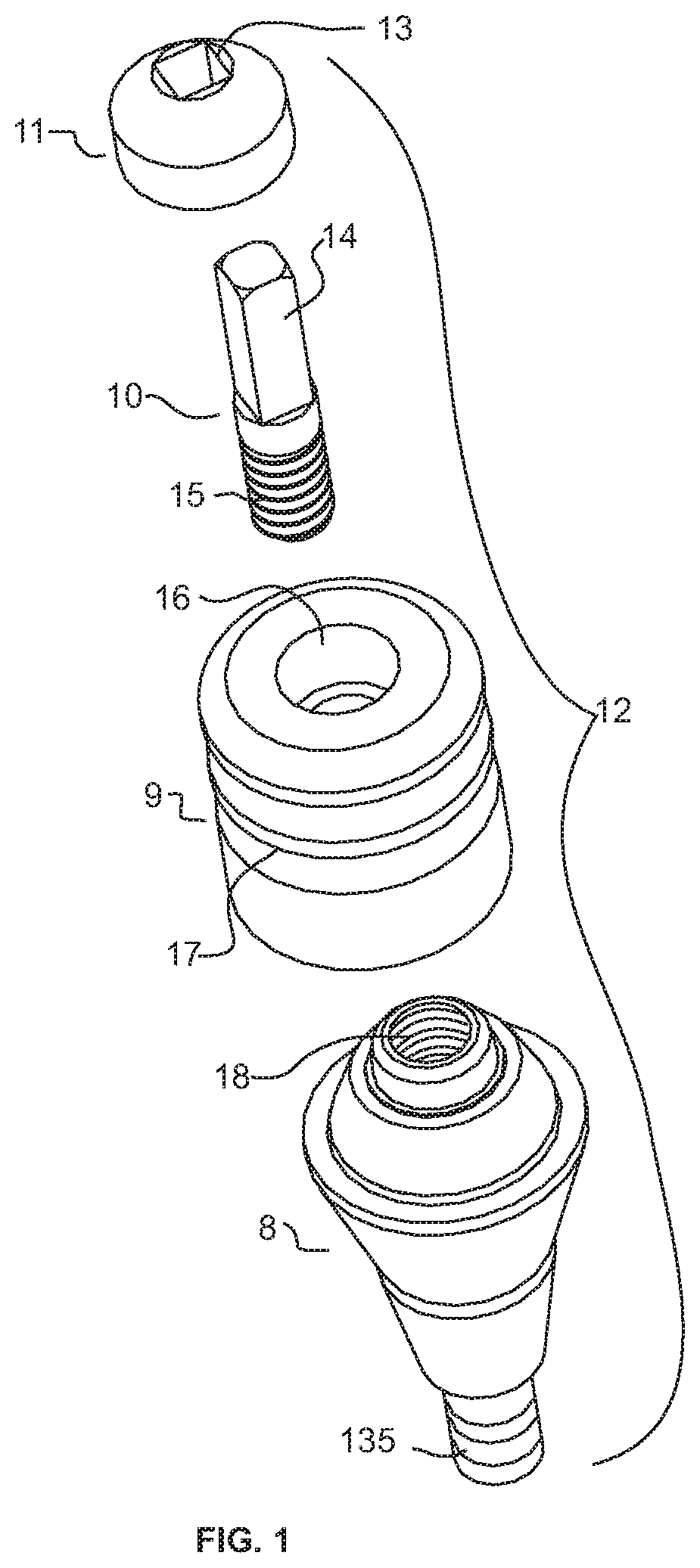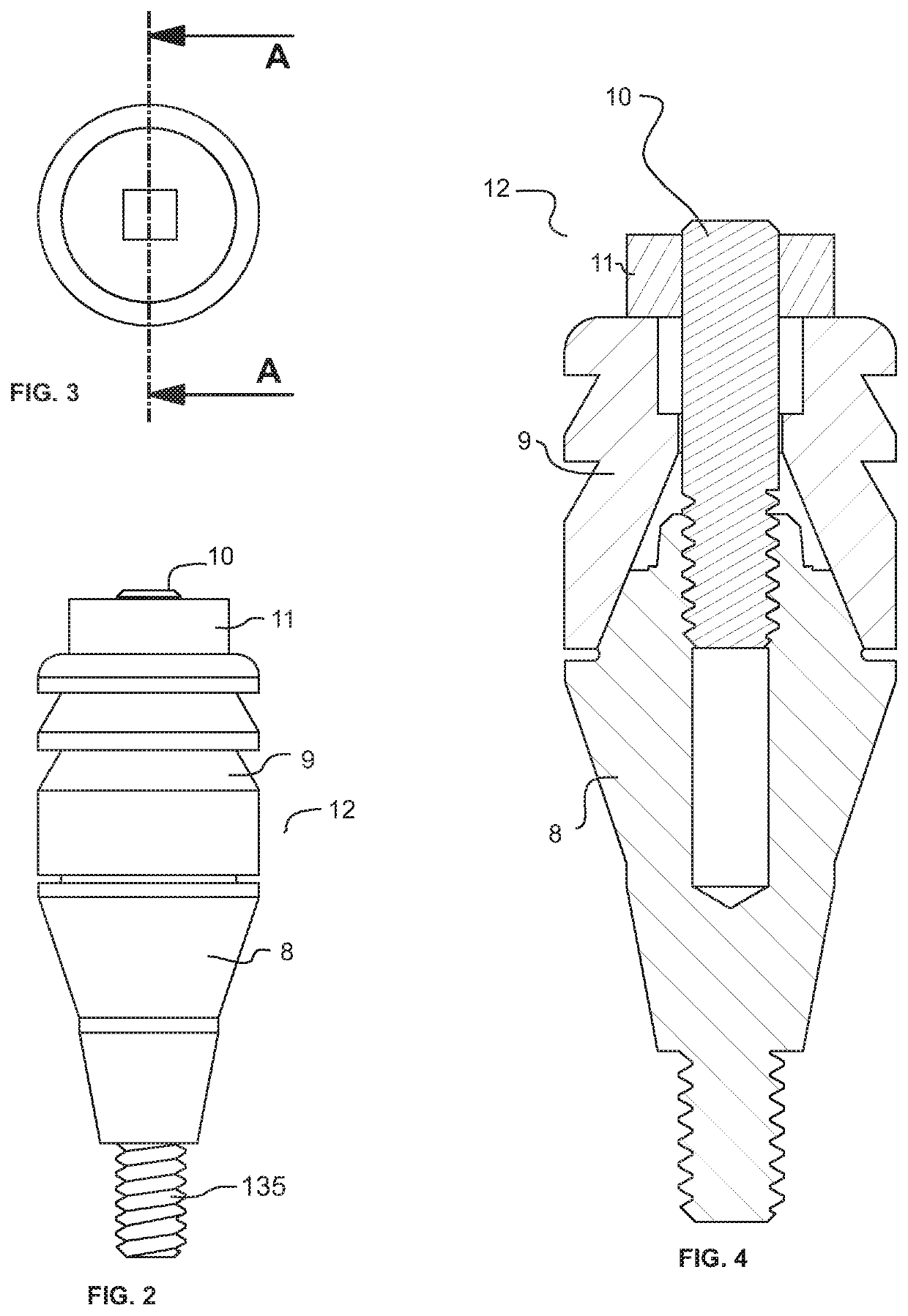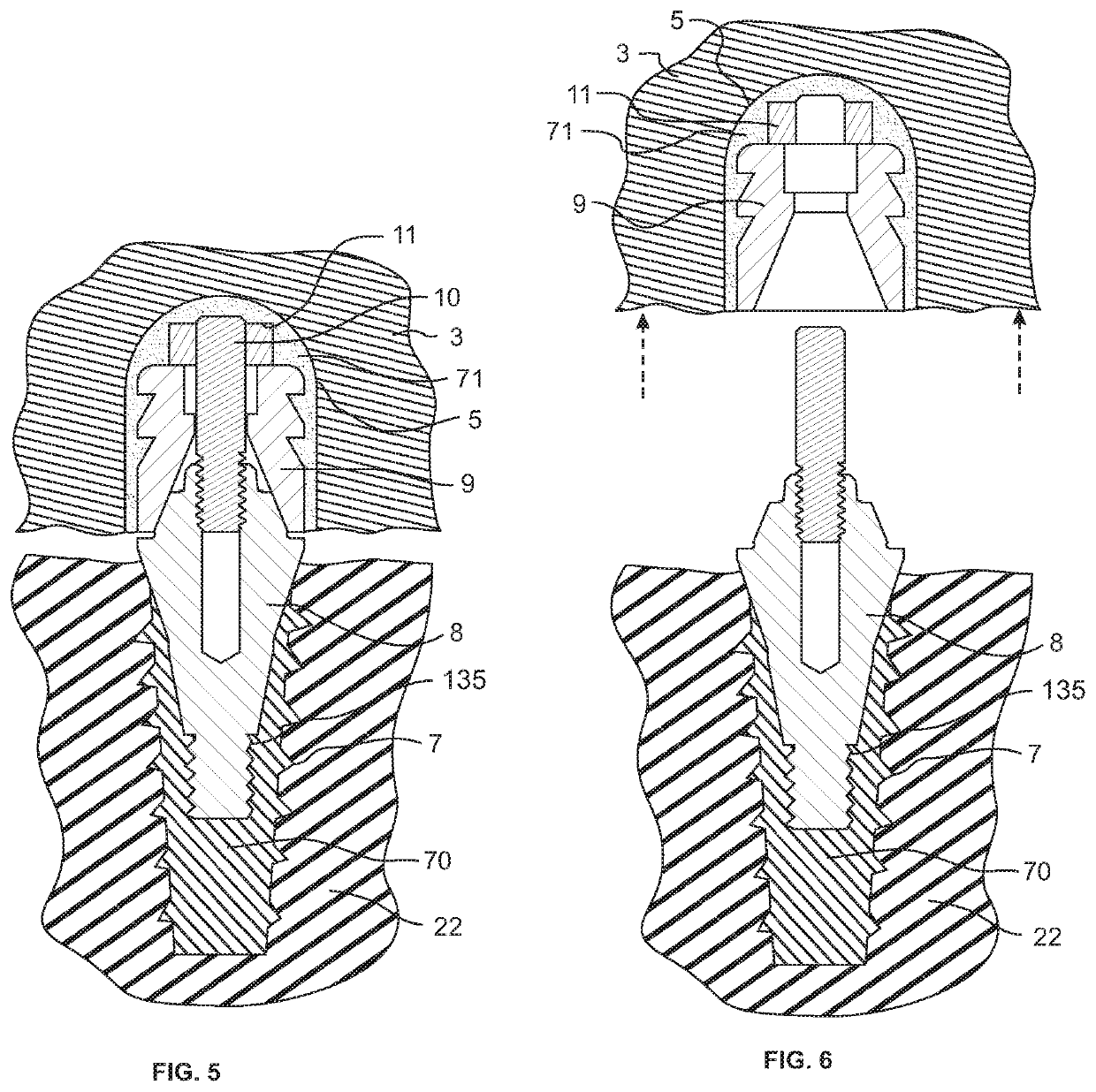Screw-attached pick-up dental coping system and methods
a coping system and screw-attached technology, applied in the field of screw-attached pick-up dental coping system and methods, can solve the problems of reducing the mechanical stability of the existing denture, affecting the comfort of patients, and complicating the installation process
- Summary
- Abstract
- Description
- Claims
- Application Information
AI Technical Summary
Benefits of technology
Problems solved by technology
Method used
Image
Examples
Embodiment Construction
[0136]FIG. 1 shows an exploded view of one embodiment of a temporary alignment system 12 for use in a direct coping pick-up process for screw attachment of a prosthesis. Implant abutment 8 has a distal end which may include attachment feature portion 135 illustrated as a screw thread for direct attachment to the patient's jaw and a proximal end with an abutment shaped to accommodate a coping 9. The abutment includes threaded section 18. The coping has a central bore 16 to accommodate screw fastening and may include ridges 17 or other structures or surface treatments to increase retention to the prosthesis with adhesive. The coping and abutment mating surfaces as shown in FIG. 1 are symmetrical. The inventive concepts of this disclosure may also be applied to abutment and coping systems that are keyed to restrict mating orientation. The coping may be mounted onto the abutment through rotation of a temporary adjustment screw comprising a threaded post 10 and cap 11. The cap 11 is mech...
PUM
 Login to View More
Login to View More Abstract
Description
Claims
Application Information
 Login to View More
Login to View More - R&D
- Intellectual Property
- Life Sciences
- Materials
- Tech Scout
- Unparalleled Data Quality
- Higher Quality Content
- 60% Fewer Hallucinations
Browse by: Latest US Patents, China's latest patents, Technical Efficacy Thesaurus, Application Domain, Technology Topic, Popular Technical Reports.
© 2025 PatSnap. All rights reserved.Legal|Privacy policy|Modern Slavery Act Transparency Statement|Sitemap|About US| Contact US: help@patsnap.com



